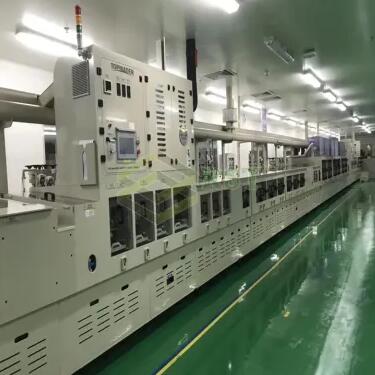What is PCB etching machine?
A PCB (Printed Circuit Board) etching machine is a specialized piece of equipment used in the manufacturing process of printed circuit boards. PCBs are essential components in electronic devices, and they provide a platform for connecting and mounting electronic components such as resistors, capacitors, and integrated circuits. The etching machine plays a critical role in creating the intricate copper circuit traces on the PCB, which form the electrical pathways for the components to function. Here's an overview of what a PCB etching machine does:
1. Etching Process: The primary function of a PCB etching machine is to remove unwanted copper from the surface of a copper-clad PCB substrate. This process is called etching. Copper is initially deposited or laminated onto the substrate in a uniform layer. However, to create the desired circuit pattern, certain areas of the copper layer must be selectively removed.
2. Resist Application: Before etching, a resist material is applied to the surface of the PCB. This resist acts as a protective layer that prevents the copper underneath from being etched away. The resist can be applied using various methods, such as screen printing or photolithography, depending on the complexity of the PCB design.
3. Etching Bath: The PCB, coated with resist, is then immersed in an etching bath or chamber filled with an etchant solution, typically a chemical like ferric chloride or ammonium persulfate. The etchant reacts with the exposed copper, dissolving it and leaving the protected copper traces intact.

4. Control and Precision: PCB etching machines are equipped with controls and mechanisms to ensure precise etching. These controls regulate factors such as temperature, agitation of the etchant solution, and the duration of the etching process. Precise control is essential for achieving accurate and reliable PCB circuit patterns.
5. Safety Measures: Etching involves the use of chemicals that can be hazardous, so PCB etching machines are designed with safety features. These may include fume extraction systems to remove harmful vapors, chemical-resistant materials in the machine's construction, and safety interlocks to prevent operator exposure to the etchant.
6. Post-Etching Cleaning: After the etching process is complete, the PCB is removed from the etching machine and subjected to a thorough cleaning process. This involves removing the resist material, neutralizing any remaining etchant, and rinsing the PCB to prepare it for further processing.
7. Inspection: The final step in the PCB manufacturing process typically involves inspection to ensure the circuit traces are etched accurately, without defects or shorts. Any necessary touch-ups or repairs are made at this stage.
In summary, a etching machine for pcb is a specialized piece of equipment used in the production of printed circuit boards. Its primary function is to selectively remove unwanted copper from the PCB substrate to create the intricate circuit patterns that form the basis of electronic devices. The etching process is a crucial step in PCB manufacturing, and these machines play a vital role in ensuring the accuracy and quality of the final PCBs used in various electronic applications.


